A comprehensive research study examining two species of rare plants in the Montgomery Canal, is underway. These plants improve water quality, provide shelter for aquatic organisms, and act as a primary food source for waterfowl and fish. The research will look at developing ways to naturally cultivate the plants.
Read More
Yearly Archives: 2023
rare plant research on Montgomery Canal
rare plant research begins on the Montgomery Canal
A comprehensive research study by Glandŵr Cymru, the Canal & River Trust in Wales, and the Rare British Plants Nursery, examining two species of rare plants in the Montgomery Canal, is underway.
The research is focused on two types of pondweed, the long-stalked potamogeton praelongus and flat-stalked potamogeton friesii, which are a part of the Potamogetonaceae family – a group of aquatic plants comprised of over a hundred species worldwide. These plants improve water quality, provide shelter for aquatic organisms, and act as a primary food source for waterfowl and fish. The research will look at developing different ways to naturally cultivate the plants, benefiting species recovery initiatives that will have an impact nationally.
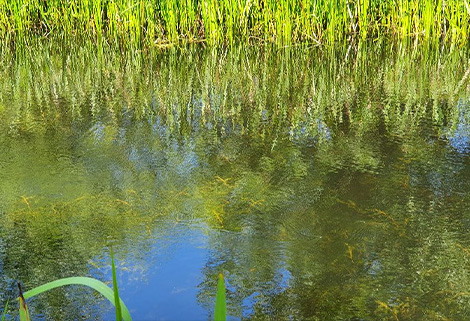
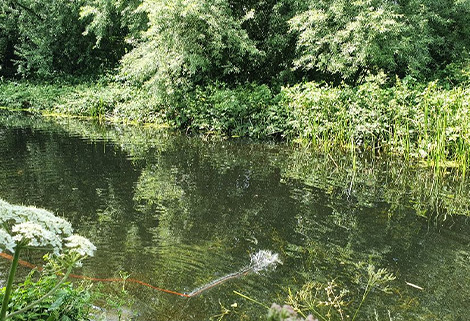
These plants are still rare and understudied. The research will help to understand the plants’ life cycles, reproductive mechanisms, and the ecological requirements to enable scientists to develop effective conservation strategies for them.
The Montgomery Canal offers an ideal human-built habitat for the species. The canal’s slow-moving waters are rich in nutrients and receive a lot of sunlight, creating conditions that closely mimic their natural habitats such as the slow backwater areas of rivers.
Glandŵr Cymru is currently restoring a 4.4-mile section of the canal between Llanymynech and Arddleen thanks to a successful Levelling Up Fund bid in partnership with Powys County Council, supported by the Montgomery Canal Partnership. One of the aims of the project is to protect the ecosystem and create conditions that will allow the plants to flourish once again.
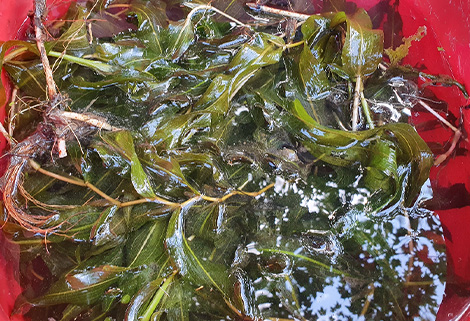
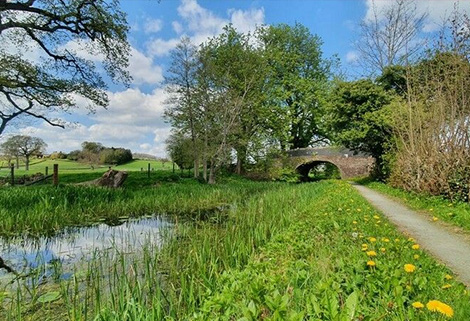
Kathryn Woodroffe, project manager at Glandŵr Cymru, said: “The Montgomery Canal is one of the most important canals in the country for nature. The pondweeds in the canal stand out as remarkable specimens for their rarity and their elusive reputation that has allowed them to persist and maintain ecological significance despite the size of their small populations. Their rarity highlights the need for this dedicated research. By studying these plants, we can discover valuable insights into the delicate balance of aquatic ecosystems and pave the way for effective conservation measures.
“The canals are a precious resource and this is just one example of the vital role they play in the natural world – in this case with research outcomes that could stretch across the UK. We are committed to protecting these special places and welcome the support of all those who value their local canal.”
Andrew Shaw, Director of The Rare British Plants Nursery, said: “We are delighted to be working on this important project. These rare pondweeds are now growing well at our plant nursery and we are already learning a lot about their ecological requirements. Our studies will enable the canal restoration works to secure the long-term future of these rare aquatic plants.”
ldk print lisa grainger
featured roving canal trader
Lisa Grainger - LDK Print
what's in a name?
My name is Lisa, and my husband is Dave. We have two daughters - Kim and Caitlin Jayne. Coming up with a business name was easy - we chose the first initials of each of our names. Thus L (Lisa) D (Dave) and K (Kim). That was in 1995. When we had our boat built in 2004, we were trying to come up with a name which incorporated both our children's names. But Kim said we should name the boat Caitlin Jayne after her younger sister as her own name was already in our established business name. So that is what happened.
After many years of having a land-based shop, we began to contemplate trading from our 69ft narrowboat, Caitlin Jayne, and at the end of 2017 we put the plans in to action, changed the boat license to a business license, got the appropriate insurance and joined the RCTA.
Our first floating market was Great Haywood, which we thoroughly enjoyed, but it was definitely an eye opener, to say the least. We soon realised we needed some sort of canopy to protect us and our products against the rain. So, when we got back home, we got our heads together to see what the best way would be to have something secure, yet easy to take down and not permanent or anything that might deface the boat.
Being ex market traders, we still had the market stall bars and the canopy which we could use and we had a few more bars made up that fitted on the rail of the boat. So, with what we already had in storage and few additional bars, we had our canopy.
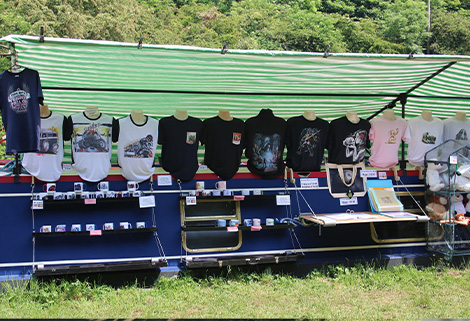
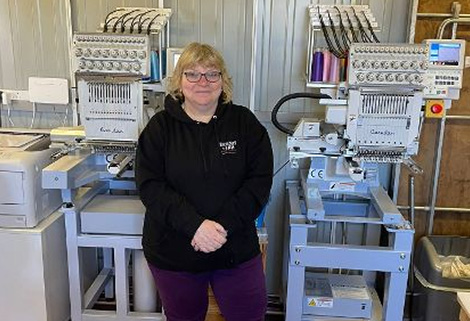
For the first couple of floating markets, we printed mugs, mouse mats, keyrings, clocks, coasters, placemats, cushions, T shirts and hoodies, but by the end of the 2018 season, we had expanded our products to include embroidered T shirts, hoodies, and polo shirts.
We have been doing embroidery since 2003 and were looking for a 2nd 15 needle embroidery machine that would match what I already had. The problem was, getting one that would fit on our boat, as the one I already had was too big to fit through the doors of our boat.
I had approached Barudan but they only had a 9 needle machine that would fit through our doors, but we really needed a match to what we already owned.
Luck was on our side for once, because Barudan came back a few days later to say they would build us a 15-needle embroidery machine on their 9-needle frame and we would be the first people in the UK to have this machine.
When we do floating markets now we still print the above, but with the additional embroidery to T shirts, hoodies and teddies or, if customers bring their own items, we can print or embroider their clothing.
Other products include engraved products, 3D models, door plaques, bags, and a whole new range of things.
We have the best of both worlds because when we are not trading from our boat, we are back at base and producing other products that we cannot produce on our boat, like our full colour banners, and 3D printed products.
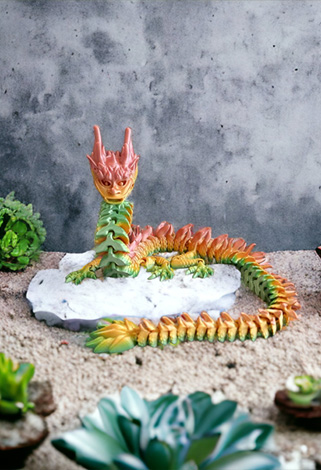
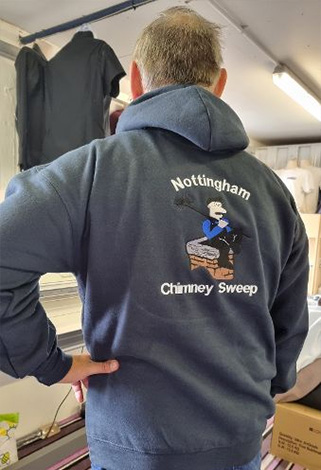
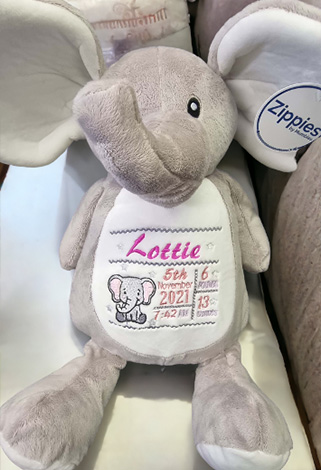
Basically, our services include:
- Embroidery or printing to workwear, casual clothing, hospitality, catering, sportwear, hats, towels etc.
- Digital and vinyl printed signs, banners, decals, vinyl graphics for vehicles, boats, etc.
- Personalised gifts include, embroidered teddies, printed mugs, mouse mats, keyrings, cushions, place mats and coasters, clocks etc.
- 3D printed models for children to role play, ornaments, or home decoration.
- Laser engraving to acrylic led plaques, slate coasters and place mats, wood etc.
- Road legal number plates – we are a registered number plate supplier.
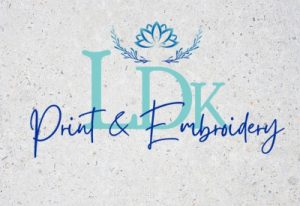
LDK Print & Embroidery Ltd is a family run business. Established in 1995, we have, over the past few years expanded and flourished, now with a satisfied customer base from all over the country, that keeps returning year after year. We know our new customers will be more than satisfied with our services.
07482 832082
info@ldkprint-embroidery.com
https://www.ldkprint-embroidery.com/
https://www.facebook.com/ldkprint
nothing but padlocks
nothing but padlocks
the boater's preferred security padlock
The product we are about to discuss is available at 20% off of RRP for a limited time.
A boater who leaves their vessel unattended for any time, be it two days, two weeks or even more, has only one thing on their mind. Security. How safe is my boat going to be? Unless you are moored in a secure marina, or have berths around other boaters, mooring up somewhere unknown and alone could be a risk. The importance of the best padlock is therefore a high priority for any boater wanting to secure their boat to the best of their ability.
We were approached by the UKs leading supplier of padlocks, NothingbutPadlocks, and asked if we would carry out a survey among boaters, to find out which padlock the crew favoured as the best option for the job, from a point of view of security, water protection and ease of use.
We were duly sent a selection of seven padlocks which included chrome combination padlocks,
marine combination padlocks, weatherproof padlocks and waterproof Diskus padlocks. We then began to conduct the survey.

Being moored at that time in a busy location, we found ourselves with plenty of floating friends to help evaluate these products. Going from boat to boat and asking if the occupants could spare half an hour to examine and talk about each padlock we put on display, we soon found that there was an overwhelming preference for the Diskus Waterproof Padlock.
In fact 90% of the boaters we spoke to agreed that this was the best amongst the available choice for both Security and Durability.
Over a period of two weeks, we spoke to many boaters who were short term moored, but were happy to take the time out to speak with us. Most of the boaters we spoke to agreed that the Diskus waterproof padlock was by far the best, because of it's design, build quality, water durability (stainless steal body and shackle) and the fact that it would prove difficult for a thief to find a way into the locking arch.
Nobody was overly keen on the combination padlocks. Too fiddly and not easy to use (especially in the dark). A number of boaters we demonstrated these locks to favoured The Master, but these were few in comparison with those who went with the Diskus Waterproof Padlock as their preferred choice. The other key operated padlocks were thought to be too flimsy or didn’t seem to offer enough weather proofing. There was also the concern that they would not be a great deterrant to the would be thief. We have seen how easy it is to break a padlock on You Tube. Yes folks, it's out there.
But the style of the Diskus Waterproof Padlock makes it that more difficult to get any tool into the locking arm and mechanism, making it that much harder for the would-be robber to enter your vessel.
When used with the Hasp and Staple, which is available as an important extra, you can leave your boat knowing that you have made it as difficult as possible for any would-be thief who would certainly struggle to jemmy it.
We all know that any type of lock device is only a deterrent to these crooks, but securing your boat with the best available - both for security and water protection - can bring less anxiety and less worry. Plus you will know that you have tried your best to stop thieves getting in, and have a padlock that will not rust.
The Diskus waterproof padlock is manufactured in Germany to the highest of standards. But beware of inferior copies – many of which are on the market!
Technical:
Winner of the Practical Boat Owner padlock test for salt water and security resistance!
This is a fully weatherproof marine grade Diskus padlock made by ABUS in Germany entirely from non-corrosive materials. The 360 degree anti-cut protection, complete with reinforced plate within the body, helps to prevent the lock body from being cut or force attacked.
ABUS recommend that this product is used with the ABUS 140 hasp and staple for maximum security. It covers the padlock shackle completely and makes bolt cutter and saw attacks much more difficult.
As our name suggests we specialise in nothing but padlocks. We stock a popular range all which can be delivered the very next day but if you require something that you do not see on the site, please do not hesitate to contact us.
0151 266 8606
info@padlocks.co.uk
https://www.padlocks.co.uk/
history of waterside cottage
history of waterside cottage
holiday cottage owned by wyvern shipping co. ltd.
Wyvern Shipping Co Ltd is primarily a holiday canal-boat hire company, based in Linslade, near Leighton Buzzard. Our boats are all purpose built by us, and are easy to handle. However, there is more to us than just boats...
If you prefer to watch boats rather than be on one, we also have a beautiful 3-4 star canalside holiday cottage. Our 160 year old detached cottage is a fun place to be and perfect for guests wishing to sit and relax while watching the boats.
Set in a working boatyard, it is perfect for families wishing to experience a different kind of holiday, with lots of boats coming and going. It is a 20-minute walk to a choice of shops, pubs and restaurants in Leighton Buzzard, Bedfordshire and a 25-minute walk to a Leisure Centre. Situated on the edge of The Chiltern Hills, there are many National Trust properties, and other historic places of interest to visit nearby, as well as a zoo, a safari park and steam railways.
The cottage, which has 6 bedrooms and three bathrooms, and includes an attic bedroom and additional small TV lounge (ideal for teenagers), is available for weekly holidays and short breaks throughout the year. It also has an interesting history behind it.
history of the cottage
It is not known exactly when the cottage was first built, but we believe a Mr and Mrs Duffort owned the cottage and accompanying 2 acres of land from 1900 to 1953. I am told that originally the land was used as a sand quarry for local builders and also as a local timber yard.
Around 1900, the land was developed and used as a market garden. At this time, a large apple tree orchard (with the odd pear and plum tree) was planted. The address then became Bossington Gardens. The apples were cooking apples, but the apple orchard, like many other orchards in the 1950s, eventually became uneconomical. One by one, the trees either died or were blown down by storms and gales, until today there is not a single apple tree or plum tree remaining.
Then in 1953 Michael Keef bought the land as a base to run coal-carrying narrow boats and the canal bank was piled with concrete piles to make it suitable for mooring boats. The address then changed from Bossington Gardens to Bossington Wharf and it became a boat yard with three pairs of narrow boats carrying mainly coal from the Coventry coalfields to London and Leighton Buzzard.
Michael being a Civil Rural Organiser could turn his hand to most practical skills and set about doing several extensions to the cottage. Starting at the south end, he built on a living room with wooden beams, a dining room and a kitchen and then started to build a conservatory. On the north end he built a Granny annex for his ageing parents.
It was said that Michael‘s wife Elizabeth would stand at the new kitchen extension and throw broken crockery to make crazy paving (or perhaps it was laying the foundation for a path). The cottage had no main drains and the heating was a very old boiler in a back shed. This burnt almost anything from old rags, to logs from the estate, but mainly wood covered in tar from old boats being rebuilt or scrapped.
The coal boats were not a great success and they were converted to leisure boats in 1958. Then in 1960 the company and house were sold to Major John Griffin and his wife Margaret. The land was bought by Margaret and the boats by ‘The Major’. The idea being if the boats failed they still had the land.
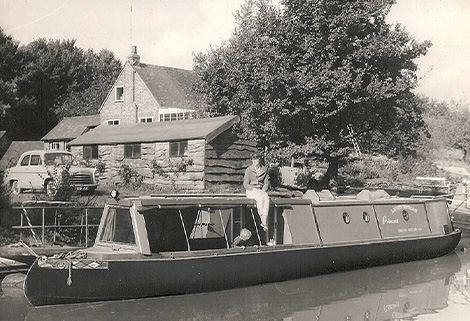
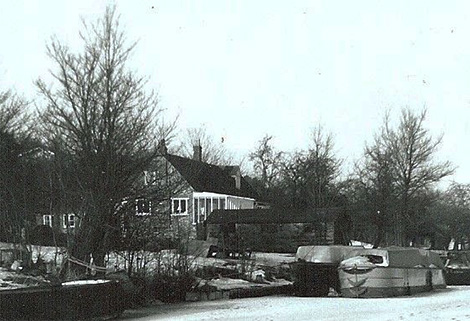
Michael had been very much into recycling old building and scrap materials and in 1960 some parts of estate were more like the 'Steptoe and Son' scrap yard. Several skip loads of scrap were removed in an attempt to tidy things up. In the Orchard, Michael had kept two horses that did their best to eat the apples, but a strong smell of rotten apples was always present. The Major tried to sell the apples to Bulmer's Cider, but they were not interested.
The Major had a further extension done to the north side of the house, building on a dining room and Kitchen and converting the old kitchen into a bathroom and the old dining room into a bedroom. Two brickies were employed for the extension, but as work appeared to progress so slowly, they soon became to be known as 'Flash' and 'Lightning'!
The cottage was then connected to the main drains, and to this day the cesspit has to be pumped up into the main drains at the end of Rothschild road. All sorts of wonderful diaphragm pumps were used until the modern submersible was installed in about 1980.
So now, after four extensions we have a much larger cottage with 3 bedrooms and two bathrooms. A diesel boiler was also installed.
The Major and Margaret had two sons, John and James, and when they retired to Cornwall in 1978, John and his wife moved into the cottage. They were there until 2000, when they moved to Milton Keynes. James then bought the cottage from John and converted the two loft rooms and old office into bedrooms turning it into a spacious holiday cottage with six bedrooms to sleep 11 guests.
The cottage was an immediate success because of its unique location elevated on the banks of the Grand Union canal and its central location for visitors from all over the country and abroad.
These days it provides a great location for family visits and all kinds of party reunions. Plus it is ideal for those who enjoy the actions of a boat yard, but feel safer watching the boats rather than being on a boat. A new gas boiler and central heating have recently been fitted along with a third bathroom. Along with all mod cons, it is a great place to stay.
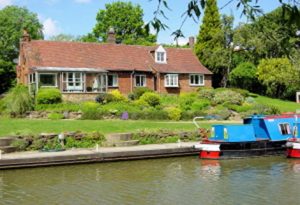
If you prefer to watch boats rather than be on one, how about a relaxing holiday in our 3-4 star holiday cottage. ‘Waterside’. Our 160 year old detached cottage is a fun place to be and perfect for guests wishing to sit and relax while watching the boats. Also conveniently positioned for shops in Leighton Buzzard, and right on the edge of the Cheviots for walks and NT properties.
01525 372355
mailto:wyvern@canalholidays.co.uk
https://www.canalholidays.co.uk
revisiting old favourites – twice
revisiting old favourites - twice!
Many of the places we’ve visited since living on the boat have been new to us, but being moored on the Peak Forest Canal allowed us to revisit somewhere we’ve been to many times when we were caravanners and even before that.
Many years ago, we were staying in a well known B&B in Castleton called the Ramblers Rest and we decided to climb Kinder Scout.
One minute we were following a long line of brightly coloured cagoules ascending the climb, when suddenly the weather ‘came in’ and there was literally no one around us. The rain was coming down so hard and the wind blowing so strongly that the Kinder Downfall waterfall was blowing upwards. The whole area was just a bog and we couldn’t see a thing.
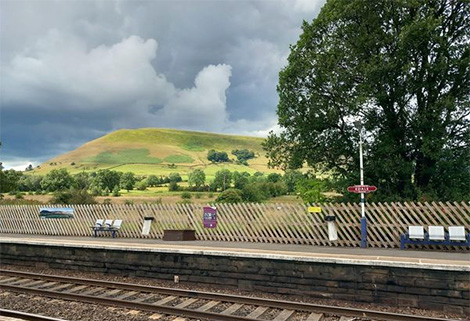
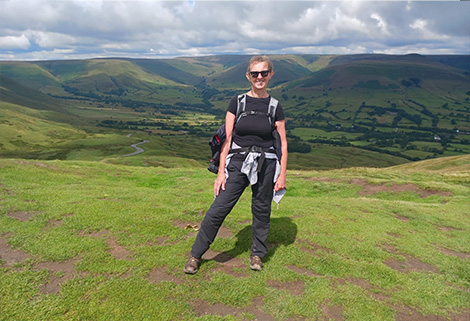
We decided to head down to get our bearings and a Peak Forest Ranger in a Land Rover stopped to ask us where we were staying as we clearly looked lost! He was kind enough to take us back to Castleton where we tried to figure out why we’d got so lost.
Since then, we’ve been back to the Peak District many times and done lots of different walks in different areas. We’ve always loved walking hills and mountains and it felt so nostalgic to be back in Derbyshire after a few years away.
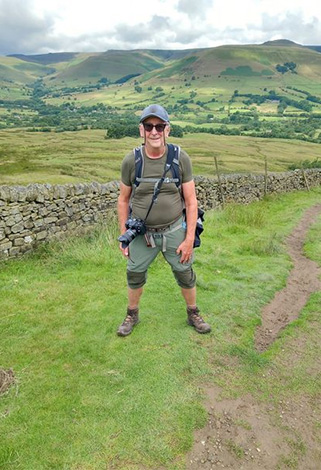 At one point, I said to Rob, ‘I feel really emotional being back here’. To which he replied with his usual empathy, ‘I’d save your energy for the climb if I were you’ 🙄
At one point, I said to Rob, ‘I feel really emotional being back here’. To which he replied with his usual empathy, ‘I’d save your energy for the climb if I were you’ 🙄
We caught the train from Strines to Edale and decided to walk up Mam Tor and around the surrounding area.
Unfortunately, when we came down from Mam Tor to continue our walk, Rob informed me we were going the wrong way and needed to go back up!
A couple who’d passed us going up as we were coming down said ‘you’re never going back up again’….words sometimes fail me 😉
All in all, we had a great day, a lovely walk and we’re hoping the CRT keep this canal open beyond July 31st so we can give our boots a few more ‘airings’ 😊
bournville 5
bournville 5
horse drawn barge carrying milk for cadbury's chocolate
(first published in 1996, but re-published here with the kind permission of Richard Hill)
Richard Hill tells the story of his grandfather, George Wiseman whose job was operating the horse-drawn boat Bournville 5 carrying milk to the busy Cadbury processing plant in Knighton on the Shropshire Union Canal a hundred years ago in the 1920s.
Anyone who's cruised the Shroppie between Bridge 45 and the Shebdon Embankment through Staffordshire will have come across a deserted canopy, its castellated fringe reaching out of the trees on the north bank. Approaching from the east, boat owners will have noticed a large glazed industrial plant concealed behind. Approached from the west and the canopy remains hidden by trees until reached, but the rising industrial noise may give a hint of something up ahead. This was part of the Premier Beverage plant, accessible only by road. In the 1920s however, this was the busy processing plant of Cadbury Limited. Milk was collected from local farms along the Shroppie and brought to this plant for processing into crumb chocolate which was then taken by canal to the Cadbury Bournville factory for further refinement into the world-famous Cadbury's chocolate.
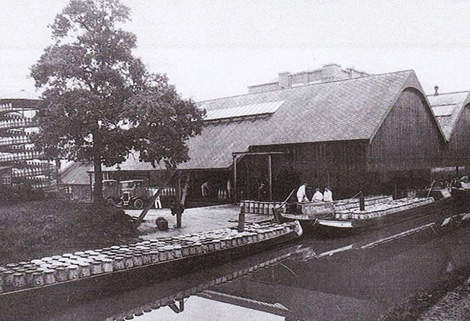
One of the boatmen working on the canal from here was my grandfather, George Wiseman. After serving in World War One he went back to his old job of collecting milk for a cheese processing plant in Gnosall from local farms by horse-drawn narrowboat. The wages were not good. When an opening for similar work became available at the Cadbury Knighton factory, George applied. The terms offered by Cadbury were much better and George was taken on. George and his wife Evelyn lived in Norbury with their family, two sons Henry and Bernard and daughters Joyce, Dorothy, Janet, and Elizabeth.
A short walk across the field started George's working day at Norbury Junction where the horse was stabled and the boat Bournville 5 moored. Work started at 6 a.m. The horse was groomed, tackled and prepared to haul the boat load of 150 empty milk turns to the start of the collection at High Onn (bridge 25). Churns full of milk were left by the milk farmers at High Onn wharf and collecting points along the canal. Gradually, as the boat made progress towards Knighton, churns, each one labelled by the farmer, were loaded onto the boat, and empty churns deposited for the following days collection. Once the boat arrived at the Cadbury Knighton plant the full churns were unloaded, the quantity and quality of each checked before being emptied and processed. It was these checks that would determine the payment to be made to each farmer each month. The empty churns remained inverted for cleaning before passing on to a conveyor that would carry them up to the top of a storage tower. The churns were stacked on the helical track, gravity carrying them back down to the bottom for redistribution, a sort of giant ‘helter skelter’ for empty milk churns. Once empty the boat was reloaded with empty churns from the bottom of the tower in preparation for the following days collection. George the boat and horse returned to Norbury Junction. The horse was stabled, the boat moored and George finished for the day usually around three to four pm.
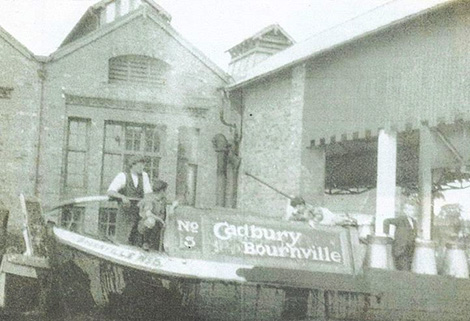
In 1925 at the age of six George's eldest daughter Joyce had scarlet fever. George could not live at home for the period while the virus was contagious for fear of carrying it to the other families. He went to live at ‘The Junction Pub’ at Norbury Junction which was run by his father and mother, Henry and Mary Wiseman. Today this is a busy pub and restaurant but then it was a small pub on a small farm holding of 14 acres.
One of the perks of Cadbury employees was being able to buy cheap chocolate particularly when it was rationed during the Second World War. Employees could make a monthly purchase of three or four 2-pound bags of misshapen chocolate, each bar bag marked ‘Not for Resale’ and costing George about one shilling a bag.
Another purchasable product was ‘crumb’ chocolate, the product of the factory made from cocoa beans, sugar and milk. This was sent to the Bournville factory, by motorised narrowboat, for final processing into chocolate bars. George's son Bernard recalled the crumb chocolate as an occasional treat: “It looked like sandstone but tasted lovely.”
Each summer Cadbury would host a summer fete for the children of their employees on the field high on the bank opposite the factory. Between egg and spoon or sack races the children would look down and wave to their fathers working at the plant. The highlight of the day was a trip on the canal in one of the horse-drawn narrow boats.
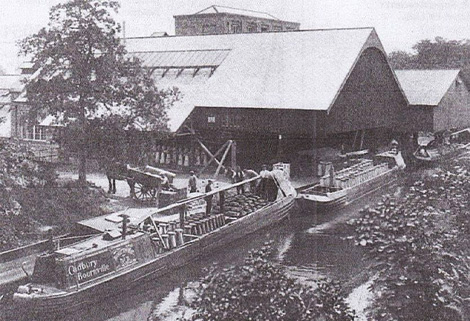
The milk collecting routine continued daily through each season. The canal was a vital part of the dairyland community. In winter an ice breaking boat would clear the canal for the daily working traffic but in the winter of 1929 even the icebreaker was outdone by the weather and the milk had to be collected by road. Perhaps Cadbury recognized the opportunity as a more efficient form of transport or perhaps for other reasons, the milk collection was slowly transferred from canal to road.
Following Bournville 5’s final collection, George was transferred to work at the plant itself, loading and unloading lorries with milk chocolate crumb and other imports and exports from the factory. By now George lived in Knightley some eight miles from the factory. In the 30 or so years of working a country he was late for work only once. On the 12th of February 1955 while motorcycling to work he collapsed and died having suffered a heart attack. George enjoyed his work and died probably the way he would want. His children, now all sadly passed themselves, remembered him as a fine man, Cadbury as a good employer and a manufacturer of fine chocolate, so much so that my mother Dorothy, never bought chocolate other than that made by Cadbury.
water horses
water horses
the story of the kelpies
From the duck’s eye view of the canal we see the world in a different way.
The kingfisher’s colours become emerald and sapphire, trees seem to loom above the water reaching for the ever changing sky, lilies appear as lotus flowers.
At Grangemouth the world’s biggest equine statues take on a whole new grandeur as they appear to be even bigger from the canal.
The Forth and Clyde Canal sounds at first to hint at industrial decay. The kelpie statues both celebrate the connection with metal working and raise art to a whole new level.
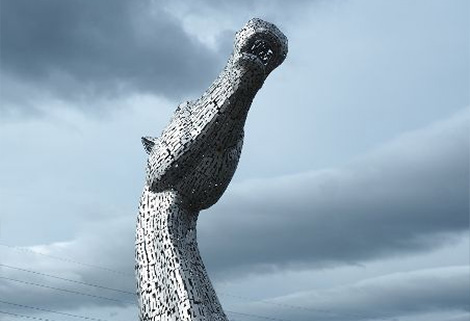
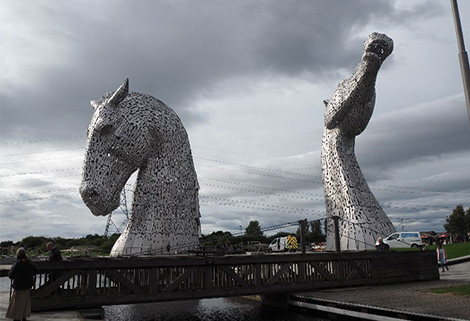
It’s possible to exhaust a thesaurus in an attempt to describe the towering metal giants as they rise from the canal. A colossus of art. Enormous and huge don’t even come close.
You can even climb up inside them and admire the feat of engineering that created something so beautiful.
Kelpies are part of the wonderful Scottish storytelling tradition.
The world of storytelling is replete with tales of monsters who lurk in river and lakes just waiting to drag an unsuspecting human beneath the unforgiving surface to the watery depths below.
The Loch Ness Monster and the Kelpies are considerably scarier than Jenny Greenteeth.
The point was, of course, to frighten children into staying well away from the water’s edge. The real monster was the risk of drowning.
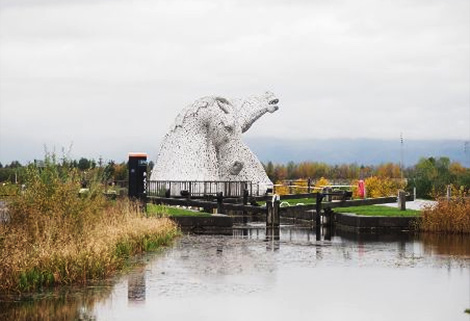
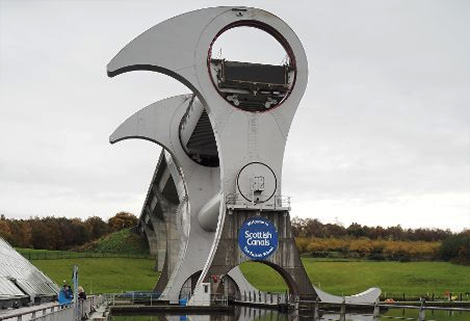
Kelpies were particularly devious. White horses with glowing skin who invited children to ride on their backs which magically lengthened to accommodate any number of people. Once there, the children found themselves stuck as if by glue and unable to dismount as the kelpie dived beneath the water, drowning his human cargo.
If you find yourself on the Forth and Clyde, do take time to gaze in wonder and maybe even climb up inside the statues. They are ________________ (insert the word of your choice here). I’ll go for 'incredible' in the true sense of the word as kelpies are difficult to believe in.
For my own telling of the story of the kelpies, please visit my YouTube channel, or type in Fiona Dowson Kelpies.
bedding wars
the boating bard
bedding wars
It's come around again
The time to change the bedding
We put it off for as long as we can
It's a job that we've been dreading
We all like a crisp clean bed
But now we've a crispier kind
With linen beyond its best before
In our dirt we are entwined
Our bed butts up to the window
It's fixed against the wall
It makes it difficult to change
And this is why we stall
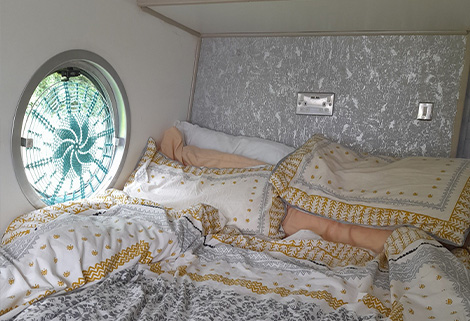
We're avoiding the acrobatics
of replacing the fitted sheet
They must shrink with every wash
because the corners barely reach
It's a military operation
As we go in for the kill
One lays on the bed like a starfish
The other tucking with a will
The activity is quite exhausting
due to the little amount of space
what with oxygen levels falling
and a mattress in your face
Next comes the duvet and cover
It's a dangerous undertaking
Like squashing a jack in a box
When it keeps on self inflating
We use the outside in method
Hands in and invert it over
Popping the press studs frantically
Looking for bedding closure
And when the deed is done
And we are all done in
We've forgot the pillow cases
Sod that we can't be bothered!
living on an electric narrowboat
living on an electric narrowboat
the all electric 'mister blue sky'
We get asked a lot, “Is it really all electric?”
YES! We have a fully electric driven (by 2x 8kw Lynch motors) narrowboat built by Braidbar Boats in 2018.
On the technical side we have: 6x 5kw @ 48v lithium batteries. 1.5kw of solar panels with an 8kw inverter. All the electronics are Victron brand.
This gives us more than enough power for propulsion and to run all the domestics such as the 240v fridge freezer, washer/dryer etc.
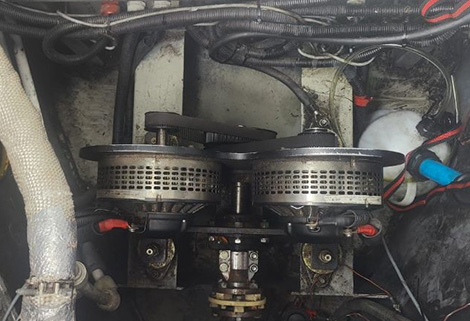
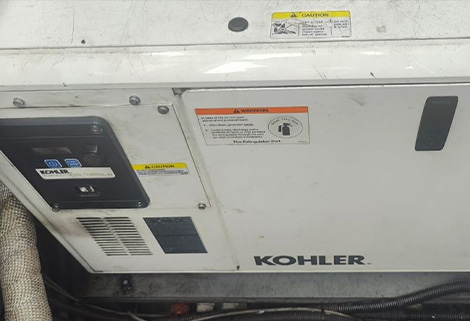
Obviously we rely on the British weather so for winter months, say Nov till March, if we get little or no solar, we have a 7kw diesel generator which we use to charge the batteries. 2.5 hours of generator use recharges the batteries to full and this will give us approximately 2 weeks of domestic use and a couple of short cruises. We still cruise in the winter but, like most CCers, at a slower pace.
Since early April this year we have cruised from the River Weaver to Kinver and not used the generator at all, so all our power has been FREE! Our plan is to get to Stourport then head back up north to the Leeds Liverpool canal for winter cruising.
As far as the motors are concerned, in 4.5 years we have not needed to do any maintenance on them. If either becomes faulty or breaks down it is simply a case of removing by a couple of bolts and an electronic plug and sending by parcel courier. Each motor measures approximately 12”x8”. We can still cruise with one motor.
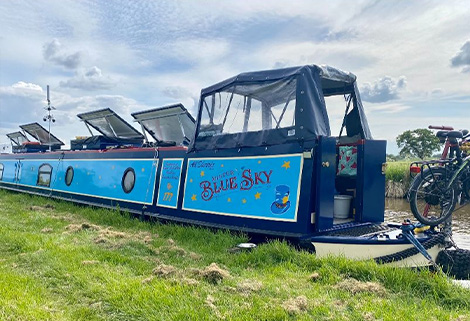
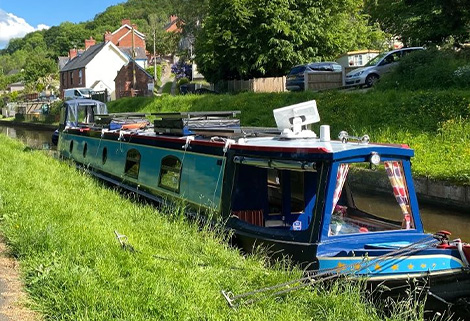
Another question or statement really is “Isn’t it quiet!” Listening to the birds and our surroundings while cruising is great, a real bonus, but sometimes the anglers get a shock when they don’t hear us approaching!
We love our life on the waterways and we feel we are doing a little bit to help the environment by living off grid, and more so by having an electric boat.


